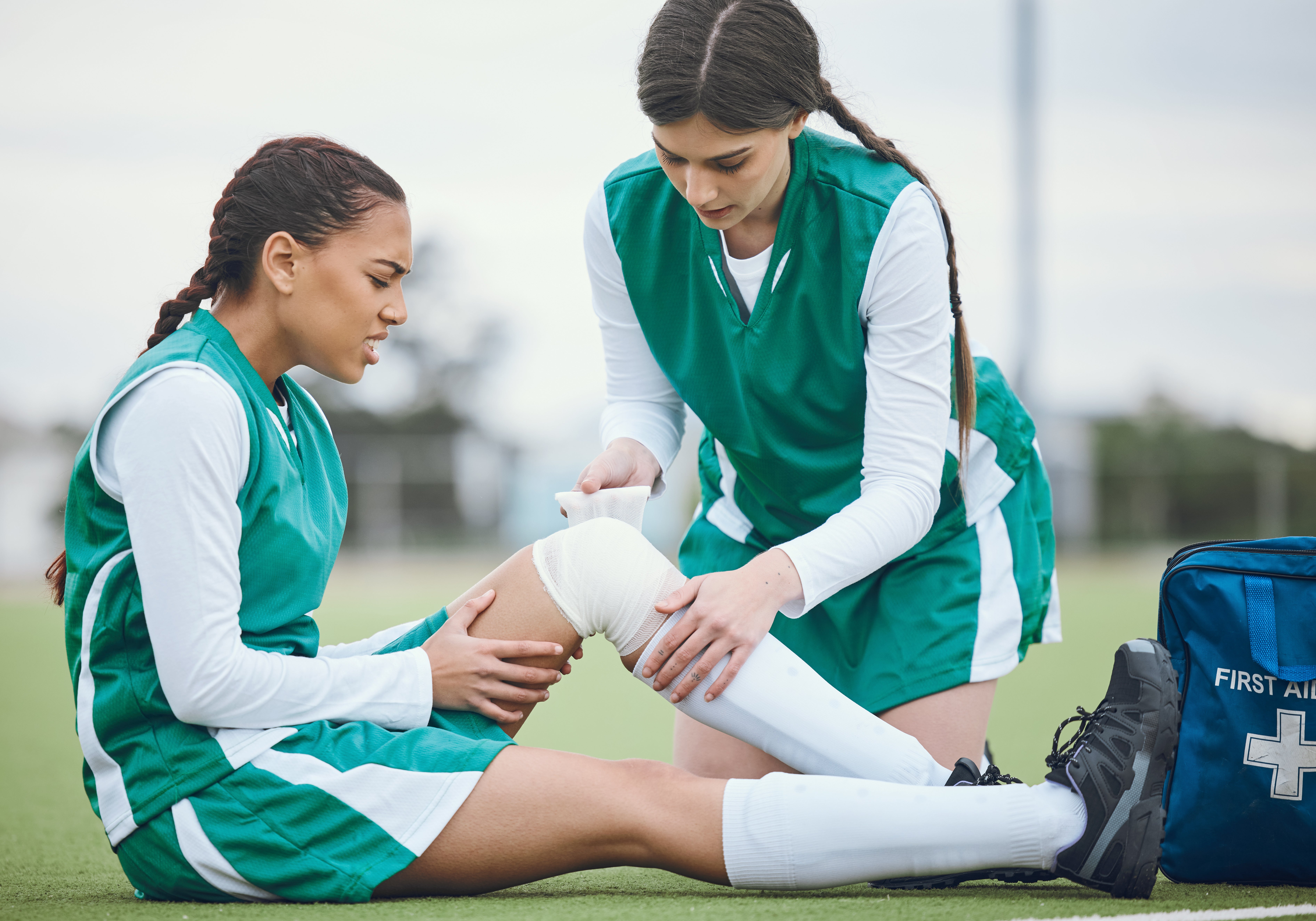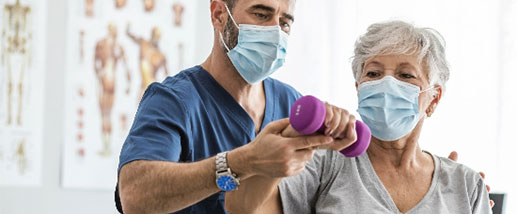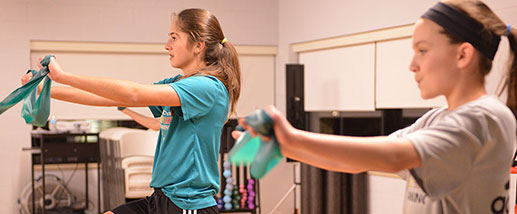For Young Athletes Facing Heartbreak of ACL Injuries, Prevention is Name of the Game
September 18, 2024
Categories: Orthopedics (Bones, Joints, Muscles)
By Darin Estep
Athletes demand a lot from their knees. Any injury — particularly to the anterior cruciate ligament, commonly known as the ACL — can be a major setback.
Unfortunately, a growing number of young athletes are suffering ACL injuries. A 2023 report by Project Play, part of the Aspen Institute’s Sports & Society Program, found that ACL injuries among high school students jumped 26% from 2007-2022.
It’s something that Timothy Henne, MD, a fellowship-trained orthopaedic surgeon with Trinity Health Medical Group who specializing in knee surgery and sports medicine, has increasingly seen in his own practice — young athletes who must deal with not just the physical pain, but the realization that they will be sidelined from their favorite activities as they work through months of recovery.
“It's just such a difficult thing when it happens” he said. “These families and kids, they're just devastated. It's a terrible thing for them to go through.”
Injuries to the ACL — one of the four primary ligaments that hold the bones of the knee joint together — are common and complex. But treatment is available. Steps can be taken to help prevent the immediate risk of re-injury or the long-term threat of osteoarthritis. And there is growing interest in training techniques to prevent injuries from occurring.
Worrisome Statistics
Dr. Henne sees several causes for the increasing incidence of ACL injuries.
One is the rise of youth sports, with more young athletes participating year-round and specializing in a single role. Another reason is the growth of women’s sports, and the fact that women are more susceptible to knee injuries. The Project Play report found ACL injuries grew faster for high school girls (32.2%) than boys (14.5%).
And the risk of re-injury is high, Dr. Henne said.
“If you're a young girl playing high school soccer and you tear your ACL, you have at least a 30% chance of either tearing your other ACL or tearing your graft when you go back and play sports,” he said.
“That's just a huge and worrisome number if you're a family going through this. And so, once the ACL injury happens, almost everything we do at that point is trying to reduce your risk of having it ever happen again.”
Surgery, Recovery, and Rehab
For ACL patients who need surgery, several options are available, often involving creating a graft to repair the tear. Surgeons can use tendons of the quadriceps, patellar or hamstrings, Dr. Henne said, and the graft choice will be made to reduce the risk of retear.
After assessing multiple risk factors — knee structure, age, gender, sports that the patient plays — Dr. Henne said he may recommend an additional procedure called ligament augmentation. The medical term for this is lateral extra articular tenodesis, a minimally invasive reinforcement of the ligament on the outside of the knee joint to help protect the ACL on the inside.
“Most of the time can get away with just repairing or reconstructing an ACL, but some people at high risk probably need to have more done,” he said. “This can reduce the odds that you have to go through this twice.”
Nobody wants to go through an ACL injury twice. That’s why the next important steps are rehabilitation and making sure patients are ready to get back in the game, Dr. Henne said. The recommended period has grown to nine months.
“Before you are going back to play, we’re going to be doing some ACL prevention work and trying to work on speed and agility for both knees to try and prevent this from ever happening again,” he said.
Prevention First
As someone who has worked with NFL and collegiate athletes — he also serves as team orthopedist for Grand Valley State University athletics — Dr. Henne has seen the value of training to prevent ACL injuries from occurring in the first place.
“At the collegiate level, a lot of teams, especially in high-risk sports, do ACL prevention work,” he said. “There are patterns of exercise that kids can learn — how to land a jump, how to strengthen different muscles in their core and legs — that can lead to a decreased incidence of injury.”
Although this training is not yet widely practiced at the high school level, Dr. Henne sees the potential to address the rise of ACL injuries in young athletes.
“It's an interesting thing for schools and families to contemplate learning more about this as part of getting their kids ready to play,” he said. “I have three kids who have gone through youth sports. I know people invest a lot of time in becoming better dribblers and better defenders and better shooters. It is probably worth investing a little time to try and decrease your risk of injury.”
Parents interested in exploring this option can contact Dr. Henne’s office at Trinity Health Medical Group, Orthopedics -Byron Center, for a referral to one of the physical therapy practices in the area that offer this training.
Getting Better for the Long Run
Dr. Henne notes the initial meeting with a family after an ACL injury is always difficult. But it is gratifying to see them progress in their recovery — and he gets to know them well because he sees them every month or two over the course of nine months.
“These conversations are fun, because they’ve gone through this traumatic thing, and then it gets better,” he said. “These young athletes are working hard, and they want to get better and faster and they’re just fun people to have around the office.
“Then you get to this day where you're nine months in and they've graduated from rehab, and they've done some functional testing, and it looks like it's safe to go. There is a lot of joy on that day.”
Read Know Your Knees for more from Dr. Henne about what to know when the biggest joint in your body needs help.
Learn more about orthopedic conditions and sports injuries we treat.



